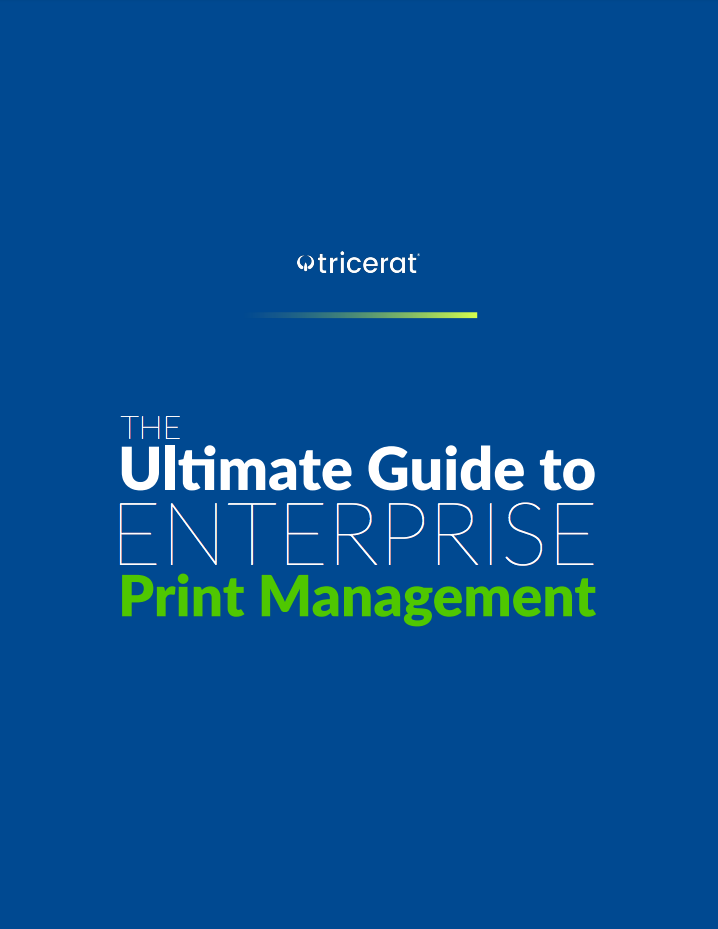![]()

Take a walk over to the nearest office printer and you’ll likely encounter something gruesome: a graveyard of forgotten memos, abandoned error-filled drafts and documents lost when sent to the wrong location. Filing cabinets are just as bad when it comes to wasted resources (both paper and space). Recent studies show that over 45% of documents found in those files are duplicated information and 80% is never needed again.
Offices across the United States face a major paper waste problem and it’s hurting the environment and the company bottom line. The EPA estimates that paper and paperboard account for almost 40 percent of all our garbage. Those quick runs to the printer quickly add up. The average office worker uses 10,000 sheets of paper every year-about two cases. With an average price of $40 per case, this adds up to an annual cost of $80 per employee. The cost of the paper itself isn’t the whole picture though. A 2005 study by the Minnesota Office of Environmental Assistance estimated that the associated cost, which includes storage, copying, printing, postage, disposal, and recycling, could be as much as 31 times of the original paper purchase price. That’s $2,480 for every employee-a number you can’t afford to ignore.
Wait, you may say, our office recycles paper! The truth is that recycling isn’t free. It needs to be collected, transported and processed. Plus, recycling doesn’t return the cost of all the paper and ink that have already been wasted. Reducing paper waste overall is the only key to significant environmental preservation and lasting savings for businesses, schools and institutions.
Some paper-saving strategies have been said again and again, but that’s because they really work. The key is getting everyone in the office on board with consistently following an office Earth-friendly initiative. When all employees are following these little steps, a company will start to see big changes.
1. Print Double-Side for Savings
One of the easiest waste reduction strategies is double-sided printing. Approximately two-thirds of office printers are duplexing units (able to print double-sided). However, the duplexing rate in the United States is only at 15%. Set up your work computer to duplex print Microsoft Office and Adobe Acrobat documents. This simple action can significantly reduce the clutter and your printing expenses.
2. Reuse
Remember how your grandmother loved to save everything? “Waste not, want not” was the philosophy of her day. This proverb still holds true for making major paper waste a thing of the past. Instead of tossing a piece of paper that’s only been printed on one side, use the other side for internal documents like drafts and agendas. Additionally, make Earth-friendly scratch pads by stapling a stack of one-sided papers, or even cut scrap sheets into quarters and use as telephone answering slips.
New technologies make conservation easy
Thanks to new file storing, project management and printing innovations, companies now have a wealth of time, money and resource saving options at their fingertips.
3. Throw Out the Filing Cabinet
Filing cabinets are enormous! Think of all the space you could free up by storing important documents in a Cloud service instead. From Google to Dropbox, there are many cost-effective ways to make your office mostly paperless.
4. Get Collaborative Online
Group projects go through many drafts. With all the programs now available for collaborative work, there is no need to waste paper on every little correction and addition.
One popular choice for team projects is Google Drive, which allows multiple people to simultaneously work on spreadsheets and documents. Collaborators can track changes and ‘chat’ while viewing the document. Plus, work on Google Drive saves instantly, so there is no fear of losing important information.
Basecamp is another well-liked platform for document sharing and collaboration. With Basecamp, team members can easily organize information into projects, upload documents and make comments.
Companies that implement one of these kinds of project management tools can expect paper waste to decrease and efficiency increase.
5. Run Green Meetings
Don’t even think about printing meeting agendas and notes! Instead, send information through email or post it in the company’s shared folder and have everyone bring a laptop or tablet. Screen sharing is also a great way to display PowerPoints, spreadsheets and documents. Programs like GoToMeeting and TeamViewer are powerful platforms for screen sharing, even when running remote meetings.
6. Be a Smarter Printer
Even if you implement all these paper-saving methods, every office has to print sometimes. Still, you can be savvy and make the most of your paper and ink. How many times have you accidentally sent something to the wrong printer? You wait by the printer only to realize that your document is lost somewhere else in the building. Or maybe your device wasn’t configured to the printer you actually needed.
These technical frustrations waste time and money. With Tricerat’s Simplify Printing, you won’t have to run around the office searching for your lost printout or spend all day on the phone with the poor IT guy trying to configure your device to the network. Instead, you can remotely access any printer from any device (even iPhones, iPads, smartphones and tablets). Plus, it works whether you’re in the office, at home or on the road.
Reducing paper waste by streamlining the printing process and cutting down on needless printing altogether isn’t just green; it’s smart. This spring, turn your office into an environmentally friendly and cost-conscious zone. Use traditional methods of paper conservation as well as exciting new technologies to save money while saving the planet.
